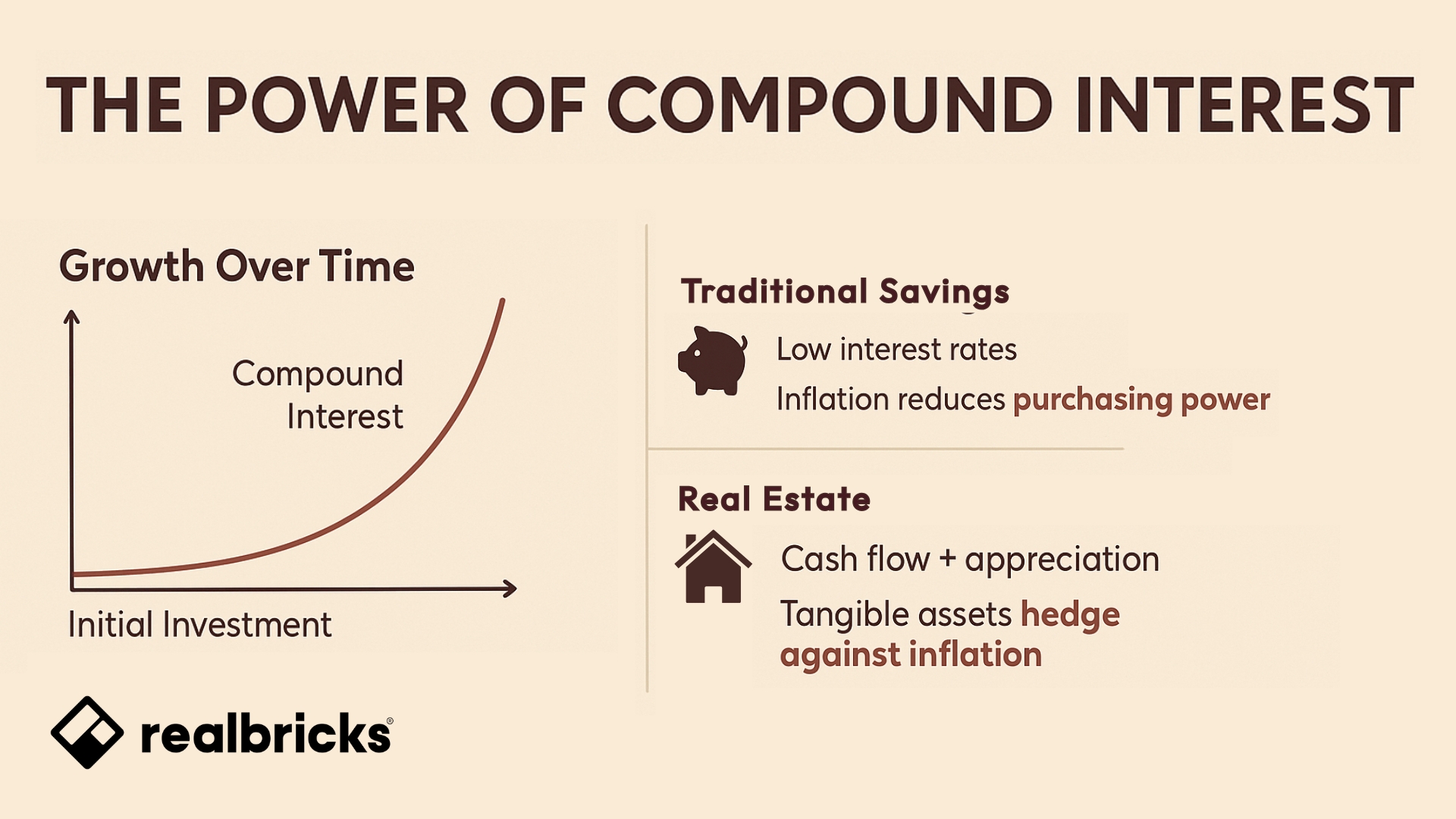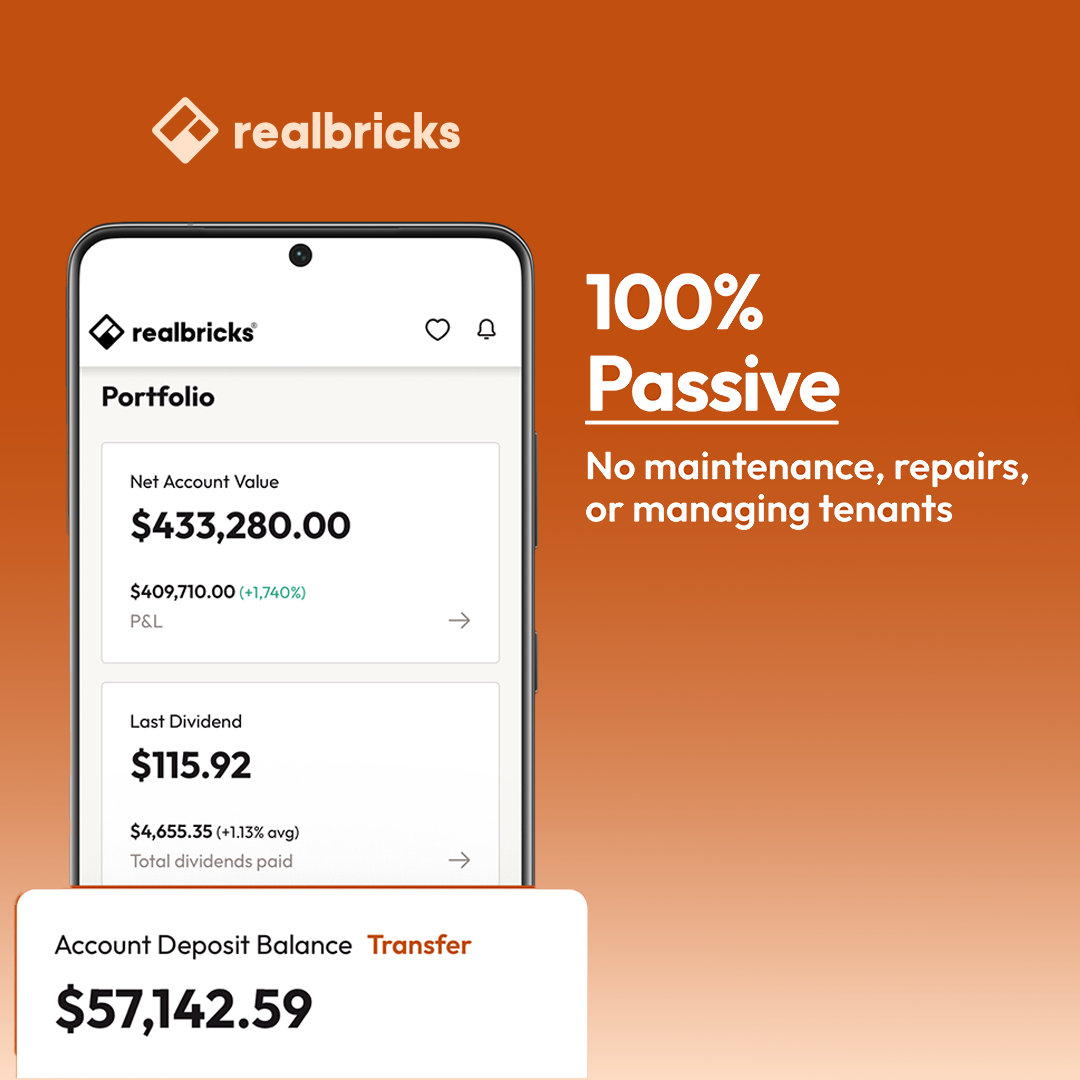“Compound interest is the eighth wonder of the world. He who understands it, earns it; he who doesn't, pays it.” -- Albert Einstein

When it comes to building long-term wealth, few concepts are as quietly powerful as compound interest. It’s the process of earning returns on both your original investment and the growth that follows — a snowball effect that turns small beginnings into substantial gains over time.
At its core, compound interest means your money works for you — and then your returns start working too.
For example, if you invest $1,000 at a 10% annual return, you’ll have $1,100 after the first year. In year two, you earn interest on $1,100 — not just the original $1,000 — and the effect compounds year after year.
Over decades, this exponential curve creates what Einstein reportedly called “the eighth wonder of the world.” But not all investments compound equally.
Traditional accounts like savings accounts and certificates of deposit (CDs) offer predictability — but at a cost. While some promotional CDs currently reach around 4% APY, those are exceptions. Most CDs average closer to 2–3%, especially once you account for longer terms or non-promotional rates.
That might sound stable, but when you factor in inflation, those returns lose much of their impact. Inflation steadily reduces your purchasing power — meaning the same dollar buys less over time. In fact, over the past 12 months, inflation measured by The Consumer Price Index (CPI) has been about 2.9 %.
So if your CD is earning 4% APY, your real return after inflation is only about 1.1 % (4% − 2.9%). And if your CD yields closer to 3%, the real gain might be near 0.1 % or even negative.
(For those sitting on expiring CDs or low-yield accounts, you might be wondering how to make your money work harder — we cover that next in our article on cashing out of a CD and turning to real estate.)

Real estate offers a more dynamic form of compounding. It grows through both cash flow and appreciation — meaning your returns can build on multiple fronts.
Remember how inflation worked against you with savings or CDs? With real estate, it often does the opposite. Because homes are tangible assets with intrinsic value and real-world utility, their prices tend to rise along with inflation — sometimes even faster. As the cost of goods and materials increases, so does the cost of housing, which naturally lifts property values over time.
Together, these factors create a dual-compounding effect that not only outpaces traditional interest-based accounts but also turns inflation into an ally rather than a threat.
With Realbricks, investors can start participating in real estate growth with as little as $100. Each share represents ownership in a highly vetted long-term rental property — generating quarterly dividend payouts from rental income and benefiting from property appreciation in stable markets like Omaha, Nebraska.
Reinvesting those dividends compounds your growth even further, allowing your returns to grow on themselves — just like traditional interest, but with stronger underlying assets.
Compounding doesn’t require perfect timing or massive capital — it just needs discipline. Whether you’re building savings or investing in real estate, the earlier you start, the more time your returns have to multiply.
For example, let’s say you invest $100 a month and earn an average annual return of 8%. After 10 years, you’d have around $18,000 — and after 20 years, that amount could grow to over $59,000.
That’s the quiet magic of compounding: steady contributions over time create exponential results. When applied to real estate — with both cash flow and appreciation working in your favor — that effect becomes even more powerful.
At Realbricks, investors have experienced an annualized return of roughly 8.25%, with four consecutive quarterly dividends, 2.25% in Q4 2024, 2% in Q1 2025, 2.00% Q2 2025, and 2% in Q3 of 2025, paid from rental income. It’s a tangible example of compounding in action — real assets generating consistent returns, quarter after quarter.
Time is the most powerful force in investing — and the best time to start compounding through real estate is today. Join Realbricks and experience the benefits of building wealth through real assets, starting with just $100.
Disclaimer: Investing in real estate involves risks, including the potential loss of capital. This content is for informational purposes only and is not intended as investment advice. Investors should perform their own research and consult with financial professionals before making investment decisions.
Be the first to know about property launches, portfolio updates, and announcements by subscribing to our newsletter.